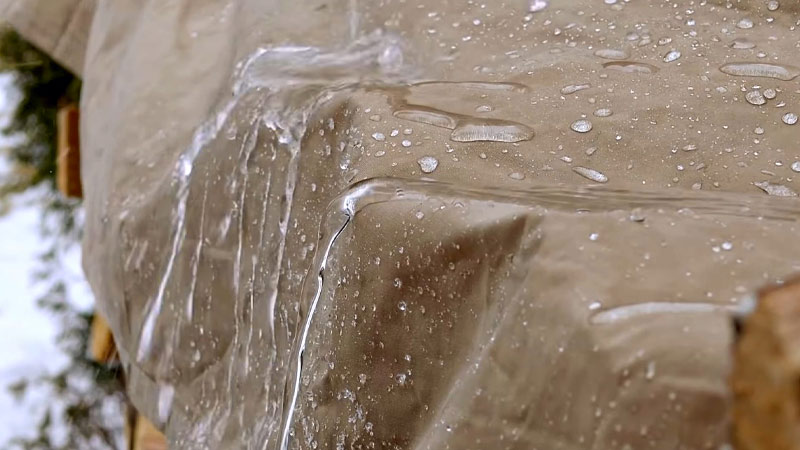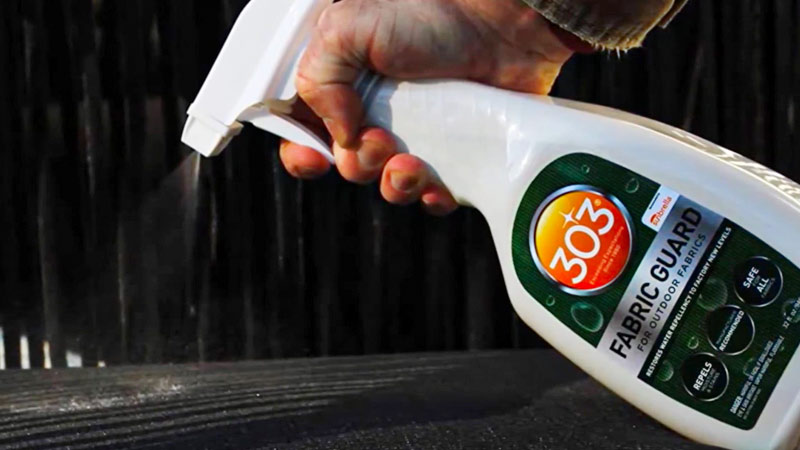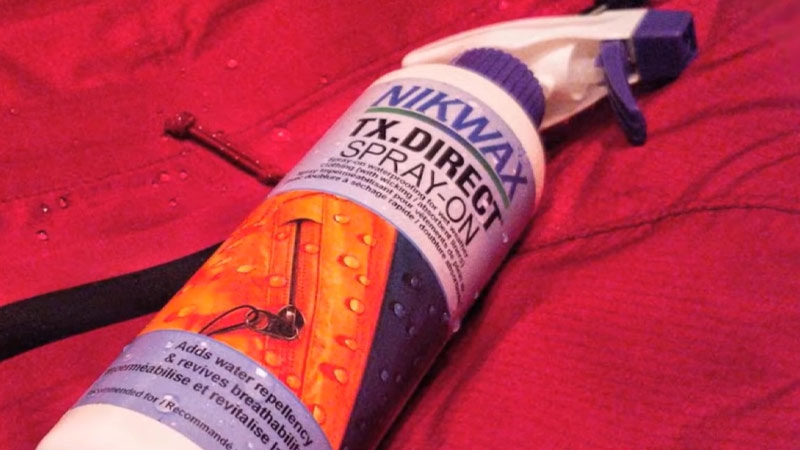Waterproofing fabric is a practical skill that empowers individuals to protect their belongings from moisture, ensuring longevity and functionality.
Whether you’re an outdoor enthusiast looking to weatherproof your gear or simply aiming to extend the life of your favourite raincoat, learning how to waterproof fabric is a valuable endeavour.
From jackets and tents to backpacks and upholstery, waterproofing can be applied to a wide range of materials, enhancing their resistance to rain, snow, and moisture.
In this guide, we will unravel how to waterproof fabric, exploring various methods and products available to you. We’ll delve into the step-by-step techniques, share tips for selecting the right waterproofing solution, and provide insights into maintaining the waterproofing over time.
Whether you’re a seasoned DIY enthusiast or a novice seeking to protect your belongings, this comprehensive guide will equip you with the knowledge and skills needed to keep your fabrics dry and functional.

How to Waterproof Fabric?
Waterproofing fabric can be a useful skill for making outdoor gear, clothing, and accessories more resistant to water and moisture.
There are different methods and products that can help you achieve this goal, depending on the type and quality of the fabric you are working with.
Here are some simple steps to waterproof fabri:
Choose A Waterproofing Product
There are various products that can help you waterproof fabric, such as beeswax, waterproof spray, iron-on vinyl, linseed oil, and silicone spray.
Each product has its own advantages and disadvantages, depending on the fabric type, durability, appearance, and cost. You can find these products online or in hardware or outdoor stores.
Clean The Fabric
Before applying any waterproofing product, you need to make sure that the fabric is clean and dry. If the fabric is washable, you can wash it with mild detergent and water and let it dry completely.
If the fabric is not washable, you can use a vacuum or a brush to remove any dust or dirt. You can also use a fabric cleaner for heavily soiled fabrics.
Prepare The Fabric
Depending on the product you are using, you may need to prepare the fabric in different ways.
For example, if you are using beeswax, you need to heat the fabric in a dryer or with a hairdryer to make it easier to apply the wax. If you are using iron-on vinyl, you need to cut the vinyl to match the shape and size of the fabric.
Apply The Product

Follow the instructions on the product label or packaging to apply it to the fabric. For example, if you are using a waterproof spray, you need to spray it evenly over the fabric in a well-ventilated area.
If you are using iron-on vinyl, you need to place it over the fabric and iron it with a hot iron.
Let It Dry
After applying the product, you need to let it dry completely before using the fabric. The drying time may vary depending on the product and the weather conditions.
For example, waterproof spray may take about 4 hours to dry, while beeswax may take about 24 hours to dry.
Seal The Seams
To make sure that no water gets through the seams of your fabric, you need to seal them with a seam sealer.
Seam sealer is a liquid or gel that fills in the gaps between the stitches and creates a waterproof barrier. You can apply it with a brush or a squeeze bottle along the seams of your fabric.
Test The Fabric
To check if your fabric is waterproofed properly, you can do a simple test by spraying some water on it and seeing if it beads up or soaks through.
If the water beads up, then your fabric is waterproofed successfully. If the water soaks through, then you may need to reapply the product or try a different one.
How to Care for Waterproof Fabric?

Waterproof fabric is a type of fabric that has been treated with a durable water-repellent (DWR) coating to make it resistant to water and moisture.
However, waterproof fabric can lose its effectiveness over time due to dirt, oil, abrasion, and washing. Therefore, it is important to care for waterproof fabric properly to maintain its performance and appearance.
Here are some simple methods to care for waterproof fabric:
Brush Off Your Gear After Each Use
One of the easiest ways to care for waterproof fabric is to brush off any dirt or dust after each use, using a soft brush or a microfiber cloth.
This will prevent the dirt from clogging the pores of the fabric and reducing its breathability and water repellency. You should avoid using soap or detergent, as these can damage the DWR coating.
Use A Specialized Cleaner
If your waterproof fabric needs a thorough cleaning, you should use a specialized cleaner that is designed for waterproof fabrics, such as Nikwax Tech Wash or Granger’s Performance Wash.
These cleaners are gentle and effective, and they do not contain any additives that can interfere with the DWR coating.
You should follow the instructions on the product label or packaging and wash your waterproof fabric in cool water with a gentle cycle.
Dry Your Gear Properly
After washing your waterproof fabric, you should dry it properly to reactivate the DWR coating. You can either use a clothes dryer on low or medium heat or use a clothes iron on no steam and a warm setting.
You should check the care label of your waterproof fabric to see which method is suitable for your garment.
You should avoid using high heat or direct sunlight, as these can damage the fabric fibres and the DWR coating.
Reapply The Dwr Coating
Over time, the DWR coating on your waterproof fabric may wear off or become less effective, especially in areas that are exposed to more friction or abrasion, such as elbows, knees, or shoulders.
To restore the water repellency of your waterproof fabric, you can reapply the DWR coating using a wash-in or spray-on product, such as Nikwax TX.Direct Wash-In or Granger’s Clothing Repel.
You should follow the instructions on the product label or packaging and apply the product evenly over the entire surface of your waterproof fabric.
Seal The Seams
Another way to care for waterproof fabric is to seal the seams with a seam sealer, such as Gear Aid Seam Grip or McNett Seam Sure. Seams are potential weak spots where water can leak through, especially if they are not taped or sealed by the manufacturer.
A seam sealer is a liquid or gel that fills in the gaps between the stitches and creates a waterproof barrier. You can apply it with a brush or a squeeze bottle along the seams of your waterproof fabric.
Store Your Gear Properly
When you are not using your waterproof fabric, you should store it properly to prevent any damage or deterioration.
You should avoid folding or compressing your waterproof fabric, as this can create creases or cracks in the DWR coating. Instead, you should hang your waterproof fabric in a cool and dry place, away from direct sunlight or heat sources.
You should also avoid storing your waterproof fabric with mothballs or cedar chips, as these can affect the colour or smell of your garment.
Repair Any Damage
If your waterproof fabric gets damaged by tears, holes, or burns, you should repair it as soon as possible to prevent further damage or water leakage.
You can use a patch kit, such as Gear Aid Tenacious Tape or McNett Gore-Tex Fabric Repair Kit, to cover the damaged area with a self-adhesive patch that matches the colour and texture of your waterproof fabric.
You can also use a needle and thread to sew up any small holes or rips in your waterproof fabric.
Avoid Harsh Chemicals
To care for waterproof fabric, you should avoid exposing it to any harsh chemicals that can harm the fabric fibres or the DWR coating. These include bleach, chlorine, acetone, alcohol, solvents, and stain removers.
If you need to remove any stains from your waterproof fabric, you should use a mild soap or detergent and water and blot gently with a clean cloth.
Test The Water Repellency
To check if your waterproof fabric is still water-repellent, you can do a simple test by spraying some water on it and seeing if it beads up or soaks through.
If the water beads up and rolls off, your waterproof fabric is in good shape. If the water soaks through and darkens the fabric, your waterproof fabric needs to be cleaned and re-treated with a DWR product.
Why Should You Waterproof Fabric Yourself Instead Of Buying It?
Waterproofing fabric yourself can offer numerous advantages over purchasing pre-treated waterproof fabrics.
Here are some compelling reasons to consider DIY waterproofing:
Cost-Effectiveness

Waterproofing fabric at home is typically more budget-friendly than buying ready-made waterproof materials. You can use waterproofing sprays, coatings, or sealants on your existing fabrics, saving money in the process.
Customization
DIY waterproofing allows you to customize your fabric’s level of waterproofing. You can apply multiple layers for increased water resistance or choose specific products tailored to your needs, such as those designed for heavy rain or light drizzles.
Reusability
Treating your fabrics with waterproofing solutions means you can reapply them as needed. Over time, waterproof coatings can wear off, but with DIY options, you can refresh the waterproofing, extending the lifespan of your textiles.
Sustainability
Waterproofing your own fabric promotes sustainability by reducing the need for disposable, pre-treated waterproof items. This minimizes waste and environmental impact, as you can recondition your fabrics for continued use.
Versatility
DIY waterproofing allows you to waterproof a wide range of fabrics and items. From jackets and tents to bags and outdoor gear, you have control over what you waterproof, ensuring all your essentials are protected from the elements.
Learning Opportunity
Waterproofing fabric at home provides a valuable opportunity to learn about the materials and techniques involved in fabric treatment. You can acquire new skills and knowledge, which can be useful for various DIY projects.
Immediate Availability
When you DIY waterproofing, you can do it at any time, even if you suddenly need a waterproofed item for an unexpected outdoor adventure.
There’s no need to wait for a specific product or rely on the availability of pre-treated fabrics.
Waterproofing fabric yourself offers a cost-effective, customizable, and sustainable solution that gives you control over the waterproofing process.
It allows you to extend the life of your textiles, adapt to various needs, and learn valuable skills while ensuring your belongings stay dry and protected from the elements.
FAQ
You can waterproof a variety of fabrics, including nylon, polyester, cotton, and even leather.
However, the effectiveness of waterproofing can vary, so choose a method and product suitable for your specific fabric.
Common methods include using waterproof sprays, fabric sealants, or applying waterproof coatings.
Each method has its own application process and level of water resistance, so choose one that matches your needs.
The frequency of reapplication depends on factors like fabric type, usage, and exposure to moisture.
As a general rule, consider reapplying waterproofing every 6 to 12 months or when you notice decreased water repellency.
Most waterproofing treatments require time to cure, so avoid washing immediately after application.
Refer to the product instructions for specific guidelines on washing after waterproofing. In some cases, gentle hand washing may be recommended.
While some DIY methods using household items like beeswax or silicone may offer limited water resistance, they often lack the durability and effectiveness of commercial waterproofing products. It’s advisable to use specialized fabric waterproofing products for optimal results and long-lasting protection.
Conclusion
Mastering the art of waterproofing fabric is an invaluable skill that can save you money, extend the life of your possessions, and enhance your outdoor experiences.
Throughout this guide, we’ve unravelled the key steps and considerations involved in achieving effective fabric waterproofing.
From selecting the appropriate waterproofing product to applying it correctly and maintaining its efficacy, you now have the tools and knowledge to keep moisture at bay.
As you embark on your waterproofing journey, remember that practice and attention to detail are your allies. Experiment with different fabrics, test your waterproofed items in real-world conditions and adapt your approach as needed.
By doing so, you’ll not only safeguard your belongings from the elements but also gain a sense of empowerment, knowing that you can conquer any rainy day with confidence.
So, go forth and waterproof, and may your adventures stay dry and enjoyable for years to come.
Leave a Reply